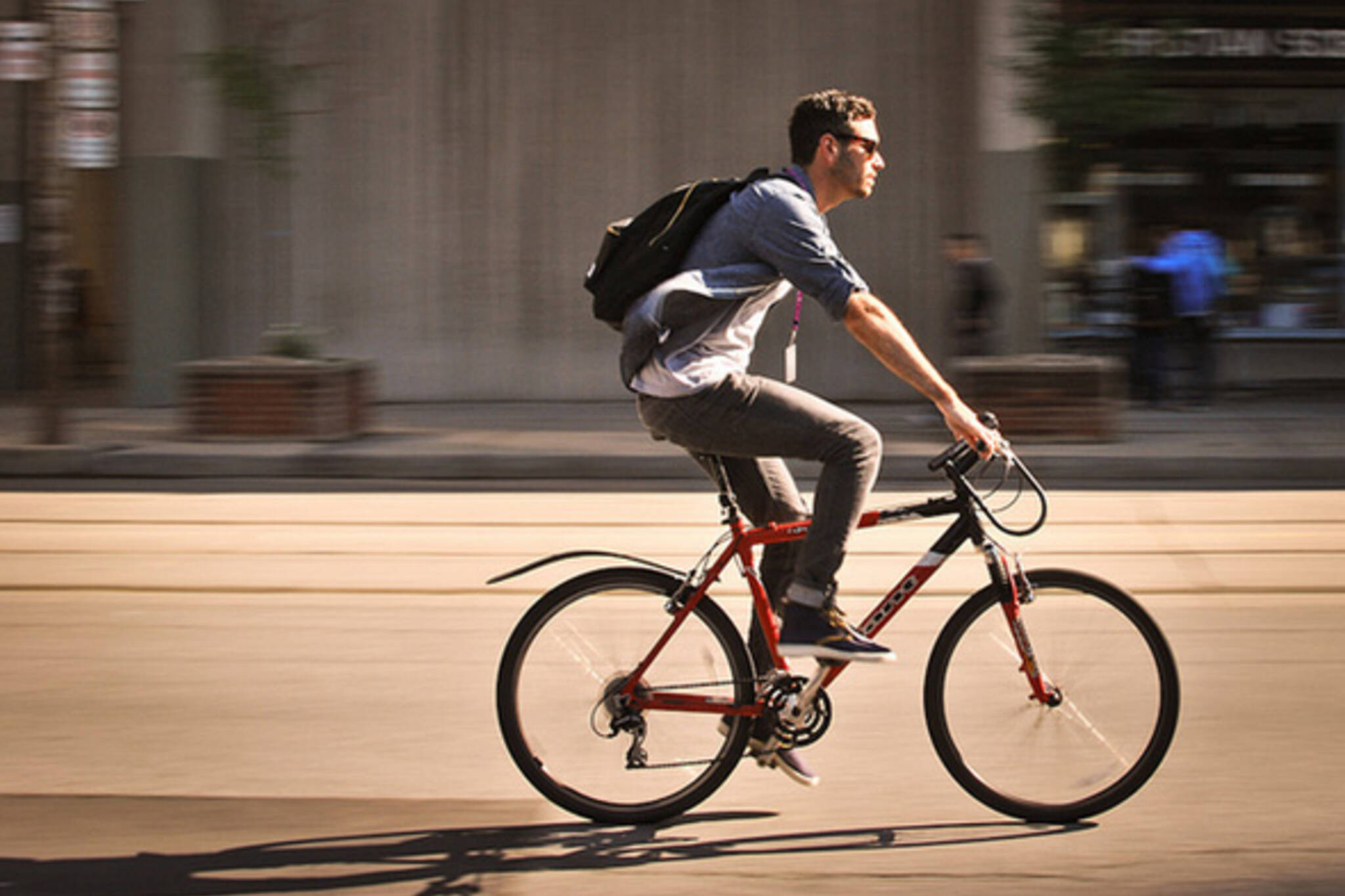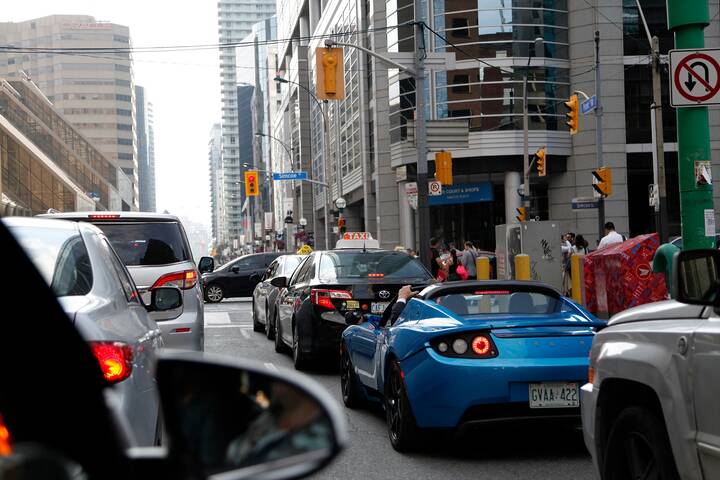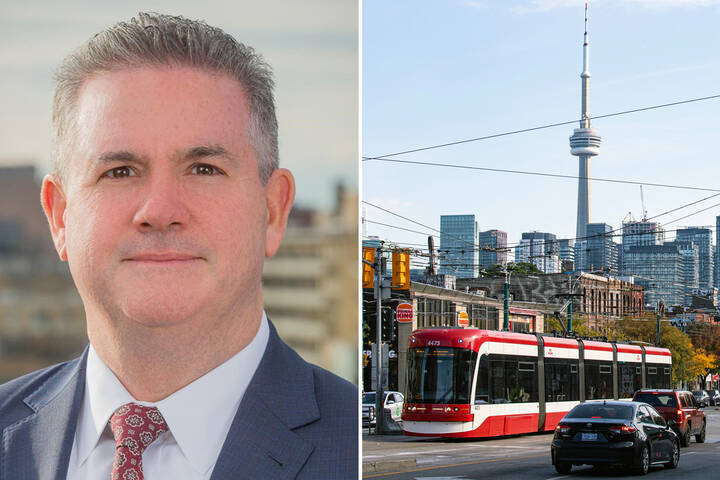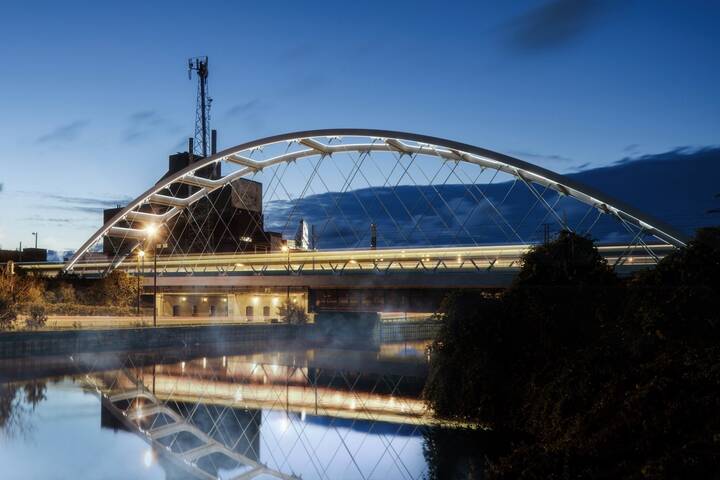
How does Toronto's bike infrastructure stack up?
The mere act of cycling in Toronto can seem like a crusade for freedom. We have a godzilla-esque mayor who erases existing infrastructure (read: Jarvis bike lanes) with what many cyclists would characterize as reckless abandon. In London, meanwhile, mayor Boris Johnson is happily skipping about building BIKE HIGHWAYS and talking about how said highways will act as a greening initiative and make for more community-oriented spaces. Hello, opposite-land.
And that's not the only city putting Toronto to shame. Everyone seems to have vague notions of how cruddy our cycling infrastructure is, so we decided to see how it actually stacks up in cities of (relatively) comparable size. And for a city of 2,791,140, we're not doing very well failing hard seriously shitting the bed. Other cities are actively trying to promote cycling. The same cannot be said for us. Behold, the numbers:
What's going on in London
Mayor Boris Johnson has decided to commit $1.5 billion to improve the city's bike infrastructure, including a 24-kilometre bike "superhighway," separated from traffic and connecting the west and east ends of the city. The highway is expected to be the longest of its kind in Europe.
Chicago
Toronto may have surpassed Chicago as the fourth-largest city in North America, but that city is still kicking our ass on the cycling front. Their Chicago Streets for Cycling Plan 2020 was developed by listening to what the people wanted, a virtually unheard of political tactic. It aims to install a 1038 km network of biking facilities, with the goal of "providing a bicycle accommodation within a half-mile of every Chicagoan." The first phase of the project, to be completed by 2015, already has a total of $40 million allocated to it. Thirty-two million of that has been provided by the Congestion Mitigation and Air Quality (CMAQ) Improvement Program, and $8 million stems from local funds. Currently, the city has more than 273.6 km of on-street protected bike lanes.
New York City
New York City is the king of bike lanes. The New York Times calls the city a "cycling haven," though there is concern that the bike-love may dissipate with the crowning of a new mayor. In any case, under Bloomberg, the city has acquired no fewer than 410 km of bike lanes, and according to a poll by the Times, a full 66 per cent of New Yorkers think bike lanes are "a good idea."
Seattle
It probably seems obvious that Seattle would be a good city for cycling. And when citizens don't feel it's going their way, they get intense about it by creating their own protected bike lanes, as we've also seen the Urban Repair Squad do here.
But when cyclists aren't pushing the situation to action, the city seems to be making a reasonable attempt to enhance Seattle's cycling infrastructure on its own. In 2007, the Seattle Bicycle Master Plan was implemented. Since then, 207 km of on-street cycling infrastructure has been created, and the government has the two-fold goal of tripling the amount of cycling in the city by 2017, and reducing the rate of bicycle collisions by one third in the same time frame. At the plan's inception, it was expected to cost about $240 million in total.
(Seattle's population, for the record, stands at about 620,778).
Montreal
Montreal came in at number eight on the Copenhagenize Index. According to the index, "The city has had bicycle infrastructure since the mid-80s, which should embarrass other cities on that continent." And according to rock-solid expert source AskMen.com, Montreal is the fifth most bike-friendly city in the world. In terms of financing, Montreal isn't quite stacking up to its American counterparts. But it did spend $10 million last year on development projects and bike path revitalization.
In total, the city has about 107 km of on-street bike lanes, which makes for 27 km per 100,000 people.
Vancouver
Vancouver makes use of separated bike lanes, with proposals for more coming in all the time.
In 2010, Vancouver city council voted unanimously to spend $25 million over two years to build 55 km of new bike lanes over ten years. And bike trips in the city have apparently gone up by "150 per cent" over the past 15 years, and about 12 in 100 ventures in fitness-happy Vancouver are made via bike. Vancouver has 60 km of on-street bike lanes, which makes for 26 km per 100,000 people.
So, what's the deal in Toronto?
The topic of bike lanes has always been a controversial one in the fair land of Hogtown. Much mud-slinging has been done on the issue, with motorists becoming more and more claustrophobic in the face of ever-increasing traffic, and cyclists becoming more and more terrified of being killed (or at the very least doored) each time they hop on their two-wheeled steeds.
Though we do have separated lanes on Sherbourne and some others in the works, we don't have much to brag about. Denzil Minnan-Wong, chair of the public works committee, failed to respond to repeated requests for comment over the span of a couple of weeks. And it's safe to say none of us will live to see the day Mayor Rob Ford eschews the motor vehicle in favour of traversing merrily around on a bicycle. The undeniable truth is that we're backpedaling when it comes to cycling infrastructure.
By the end of 2011, the city had -3.2 km fewer bike lanes than it started with due to removals on Pharmacy and Birchmount. And the same thing happened in 2012, after the removal of the Jarvis lanes.
And now? The city can expect to see 14 km of bike lanes upgraded or added by 2014. And 2001's Bike Plan promised 495 km of bike lanes to be added by 2012. What did we get? 23 per cent of that promise, in the form of 112.9 km. That's 11 km per 100,000 people.
Jared Kolb wrote on Cycle Toronto's site last year that, "City Council continues to invest in a legacy of inaction."
"There are fewer kilometres of bike lanes today than there were in 2009," he told me last week over the phone. (In 2009, there were 91).
He says the 14 km that have been added are a start, and so are the proposals for lanes on Richmond and Adelaide. But we're nowhere near where we need to be, he said. Both Montreal and Vancouver have far more bike lanes per capita than Toronto, despite the considerable size-difference in our favour.
"As a city, we need to renew the conversation about how we do cycling on the street. We don't have safe infrastructure connecting to the core," Kolb says. He thinks it's possible, but would just require a reallocation of precious budget dollars.
Jennifer Keesmaat does say she wants cycling to become a viable means of transportation by giving drivers and bikers the space they need, and the latest figures show roughly a third of all downtown travel is made on foot or by bike. But will anything like transportation harmony ever come to fruition?
Let us know what you think in the comments.
Photo by Jared Krause
Latest Videos
Latest Videos
Join the conversation Load comments







